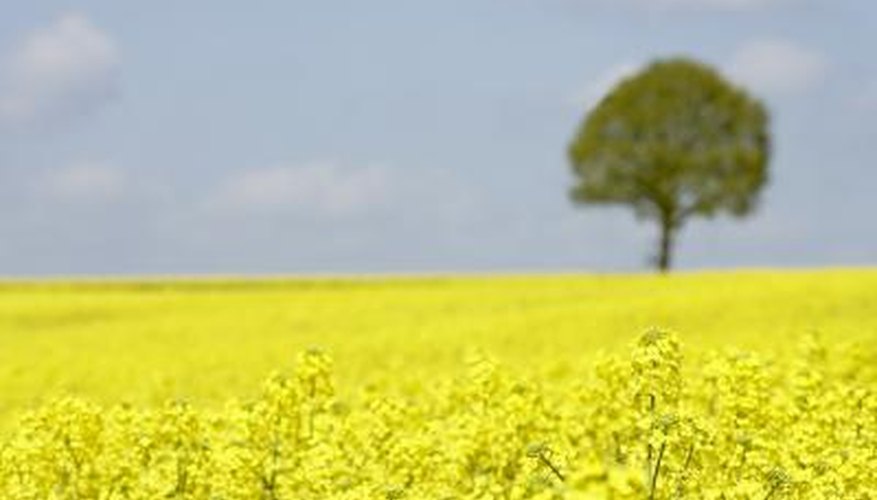Rapeseed is an excellent ground cover, produces a high quality oil and is used for animal fodder. The plant, when grown in mass, increases the tilth of soil and provides erosion control, weed suppression and excellent biomass. Rapeseed is related to the Brassicas and is planted as an annual in spring or winter. The plant grows 60 cm to 1.2 m (2 to 4 feet) tall with branches radiating out from a main stem and yellow flowers that give way to pods filled with tiny black seeds. Rapeseed is found in wild bird seed and is easy to plant and grow
- Rapeseed is an excellent ground cover, produces a high quality oil and is used for animal fodder.
- The plant, when grown in mass, increases the tilth of soil and provides erosion control, weed suppression and excellent biomass.
Prepare the planting area in the autumn. Hand weed to remove the nuisance plant species or apply a pre-emergent herbicide. The bed needs to be weed free so that it doesn't mix in with the rapeseed and compete for resources. Follow label instructions for the application of any pre-emergent herbicide.
Check the drainage of the planting field. Shovel out a 15 cm (6 inch) trench and fill it with water. Allow it to drain and fill it again. If the trench doesn 't drain after half one hour, incorporate 5 to 10 cm (2 to 4 inches) of sand into the tilled field.
- Check the drainage of the planting field.
- If the trench doesn 't drain after half one hour, incorporate 5 to 10 cm (2 to 4 inches) of sand into the tilled field.
Prepare the bed two weeks before planting. Till the seed bed in early August or in spring to a depth of 20 to 30 cm (8 to 12 inches). Fill the hopper of the rotary seeder with the rapeseed. The rate is 4.525 to 6.8 kg per hectare (4 to 6 lb per acre). Walk in even rows and apply the seed. Rake the bed in two directions to mix the seed with the soil. Scatter approximately 6 mm to 1.2 cm (1/4 to 1/2 inch) topsoil over the bed.
Set up a sprinkler and water the seed for 15 minutes. Water again after flowering. Rapeseed grows a huge taproot, and the two irrigation times are adequate in most zones. Rapeseed does not need fertilisation in most soils.
- Set up a sprinkler and water the seed for 15 minutes.
- Rapeseed grows a huge taproot, and the two irrigation times are adequate in most zones.
Mow the rapeseed before you till it into the soil as an amendment. It adds considerable nitrogen when tilled after spring flowering. Harvest the pods for seed in late June and early July. Rapeseed is classified as an oil crop and can be sold in some areas to larger producers.
